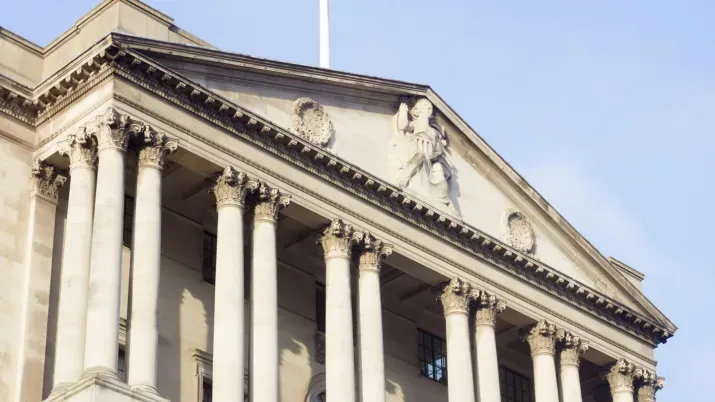Fixed Income 2020: A Brave Old World
TwentyFour
Twelve months ago, as we wrote our annual review and forecast for 2019, backing 10-year German government bonds that were yielding just 0.24% at the time to perform would have been a brave call.
Suffice to say we were among those that did not predict that yield would fall from 0.24% on January 1 to -0.37% as of December 1 (hitting a barely believable low of -0.71% along the way), delivering a handy return of 6% for the first 11 months of the year.
Looking ahead to 2020, the pain of the Bund bears is a cautionary tale for anyone minded to call the end of the multi-decade bull market in bonds, and the longest economic cycle in modern history. Anyone doing so would be betting against the strength of the secular trends that got us here.
The story is by now familiar: central banks flooding the markets with liquidity and cutting rates to historic lows, a huge transfer of assets from banks to asset managers fuelling demand for income-generating assets, and companies and governments taking full advantage by terming out their debt at ever lower spreads.
As we begin 2020, these secular trends look just as strong as they were at the beginning of 2019. Central banks are back in easing mode (or never left it), economic data suggests the cycle has more room to rumble on, and even geopolitical risks that had been threatening to tip the global economy into recession, such as the US-China trade war and Brexit, appear to have at least abated slightly.
When the US Federal Reserve Chairman, Jerome Powell, spoke of a ‘new normal’ of “low interest rates, low inflation and probably lower growth”, we found it hard to disagree.
After the turmoil of Q4 2018, which can perhaps be seen as a dry run of the market reaction to the end of the cycle, economic data has suggested that the global economy may just achieve the soft landing central bankers have been hoping for. It is hard to see inflation emerging as a genuine threat in the next 12 months, which should enable the Fed and the other major central banks to stick to the narrative that this is just another mid-cycle adjustment.
With all that said, the ever-extending cycle is creating its own shifts in risk and reward across fixed income.
Cash continues not to be a viable asset class. The limits of central bank policy options, both traditional and extraordinary, have been laid bare. Corporate default rates are expected to rise, and we are seeing signs that lower-rated companies are being scrutinised more closely by the capital markets. An awful lot depends on the outcome of the trade war between the US and China, and two developed market elections (in the UK in December and the US the following November) will also have profound implications for the global economy.
In order to have a forecast that spans a whole year, we do need to make some serious assumptions on geopolitical issues, and in doing so we acknowledge that this type of call could easily be wrong and our market views would need to change quickly, just like they have had to in 2019. The single biggest threat to our forecast is the trade war. We are making the assumption that tariffs do not get worse, but are also not materially rolled back over the course of the year. We assume that no further progress beyond a ‘phase one’ deal is made, and that the trade war theme remains in situ throughout 2020 and is a major contributor to investor sentiment, both positively and negatively, as the debates rumble on.
Closer to home, we must also make a call on the December 12 election, where we think a Conservative majority is the likely outcome, albeit by margins that might be thinner than markets might have hoped. Crucially though this paves the way for Brexit to be completed, removing one important area of uncertainty, although focus will of course then shift to the bilateral agreement that must be negotiated between the UK and the EU.
So with all that in mind, what might 2020 have in store for the bond markets?
The US and the Fed
It is remarkable to think that the August inversion of the US yield curve between the two-year and the 10-year, which has been an indicator of economic contraction on the last five occasions, has quickly become old news, though there are some good reasons why this time might just be different and we must continue to question conventional wisdom in this extraordinary cycle.
Historically the big US commercial banks have taken inversion as a signal to pull back on lending, with the resulting tightening of financial conditions tipping the economy into recession. However, with banks now holding so much capital and being encouraged to lend through the cycle, there may not be the same urgency to alter lending practices at the first signs of trouble. US bank CEOs certainly haven’t changed their tune, stating frequently that they believe the US economy remains in good shape.
Those expecting the cycle to turn in 2019 will have been disappointed when the defining event of the year arrived just four days in. On January 4, Fed chair Powell sat alongside his predecessors Janet Yellen and Ben Bernanke and declared the Fed had no “pre-set path” for rate hikes and was “listening very carefully” to the market. From that point on it became clear the Fed would pivot to extend the cycle and rate cuts would eventually follow. This move brought us 25bp rate cuts in July, September and October, reversing a trend of nine hikes that began in December 2015.
In our base case we see Fed rate policy on hold for the duration of 2020, with a high bar for any return to the hiking cycle. The risk to our forecast is tilted more towards lower rates, which we think would happen if the trade talks soured and financial markets acted accordingly, selling off risk assets.
What does all this mean for US Treasuries? Our base case provides for a stabilisation in the economic backdrop, keeping the UST curve positive, with the 10-year UST yield registering a small decline to around 1.70% by the end of the year. We don’t see inflation coming through as a threat, and we think Treasuries will continue to be well-held throughout 2020 as the world’s favoured negatively-correlated, risk-off asset. This in turn means yields will stay in check, probably not surpassing 2%.
Europe and the ECB
We expect the European Central Bank to cut its deposit rate a further 10bp in 2020 to -0.60%, and double its latest round of asset purchases to €40bn per month.
Our rationale lies in the tiering of this negative rate that came into force in Q4 2019, which essentially acts a tightening of financial conditions. The ECB’s 2020 move should really be viewed as a recalibrating of this prior action, and would have little impact on the economic backdrop or inflation expectations, in our view. The Eurozone’s banks have so far been very reluctant to pass on negative rates to their broader client base, essentially breaking the transmission mechanism of monetary policy below the zero threshold. We do think this reluctance will be questioned more and more the longer rates are below zero, but until negative rates are widely passed on, the ECB’s effectiveness to deal with future downturns is materially weakened.
Consequently Europe is in dire need of fiscal stimulus. The Eurozone’s largest economy and growth engine, Germany, is on the brink of recession and is running a large budget surplus, which in our view does not really make sense, especially when a deficit can be funded at negative yields. Investment projects funded at zero cost suddenly become a lot more viable than when they are modelled at historic rates. This is one of the reasons we believe Christine Lagarde was chosen as Mario Draghi’s replacement as president of the ECB, to use her political clout and experience to cajole Eurozone governments into loosening the purse strings.
Unfortunately, Lagarde’s appointment brings its own risks. The former IMF president is not a central banker, and this is a tough year for her to be taking on the job while there is such division within the governing council. Stimulus is not reaching the real economy. The ECB needs to either pressure banks into actually charging their clients negative rates, or find a way to reach consumers directly (which would require some form of helicopter money). We don’t see Lagarde as a leader in the same mould as Draghi, who showed a knack for bold measures and gaining the respect of the markets, not to mention dragging his governing council with him, often against the tide.
Back to our forecasts, and despite confounding many with their positive performance in 2019, we see Bunds delivering a positive return again in 2020, albeit a small one, with the 10-year yield falling to around -40bp by year-end. We expect spread convergence between Europe’s core and peripheral government bonds to continue in the next 12 months, with the core-periphery correlation fully re-established during 2019. For value in European government bonds, our pick would be Spain, which, barring any major political disruption, should see its spreads converge further with Bunds.
The UK and the BoE
While the merits or otherwise of Brexit will be debated for many more years to come, we do think the relief of finally getting the deed done will re-awaken the ‘animal spirits’ of the UK economy, which have been lying dormant for the best part of four years, since the referendum was first announced. Business investment, for instance, which has been stagnant since 2016, will have a chance to catch up. We see sterling enjoying a further bounce in the short term, though remaining below pre-referendum levels. In the aftermath of Brexit, we think sterling can continue to be the best performing major currency over a more medium term horizon, driven primarily by a pick-up in relative growth and ultimately higher interest rates.
A completed Brexit deal would give the Bank of England a decision to make. It is clear to us that without the Brexit uncertainty, Mark Carney would have been minded to push through a rate hike or two while the US was in tightening mode. However, since then we have experienced a global economic slowdown and a return to easing policies. Beyond Carney’s current departure date of 31st January, it is likely the Monetary Policy Committee will want to see solid evidence of a pick-up in investment and growth before acting on rates. Overall we think the BoE will demonstrate a tendency towards a hike, but that we may not quite get there in 2020.
Given these considerations, the Gilt curve right now looks a little too flat. We see that correcting slightly in 2020, with the 10-year Gilt yield pushing up to around 1% by year-end, making it the laggard in rates behind Bunds and Treasuries.
Credit – more of the same?
Having formed our macro view of the world, we can proceed to our view on credit for the coming 12 months. In general, we expect to see credit spreads drift wider over the course of the year, though not materially.
The negative inputs to this overall view are a stabilisation of the deteriorating global economic outlook, relatively tight current spreads, an ageing economic cycle resulting in a gradual weakening of credit metrics, and a modest pick-up in the global default rate, particularly in Europe. The positive offsets are the usual suspects of supportive central banks, the demise of cash as an asset class generally leading to fixed income inflows, very high debt service coverage ratios, a very healthy consumer and a highly capitalised banking system.
However, we don’t see anything that would cause credit spreads to move aggressively wider in 2020. We believe that would require a shock, such as the US-China trade talks breaking down completely. Looking at where spreads are right now, they have parked themselves pretty much halfway between where they started 2018 and 2019, having rallied steadily after the turmoil of Q4 2018. There are some potential feel-good factors – such as the aforementioned US-China deal and the end of Brexit uncertainty – that are yet to be fully priced in to that rally, in our view, and that should help keep a lid on spreads in 2020.
Naturally there are both geographic and sectoral biases to our overall views. Within ratings bands, for example we would expect to see more spread divergence between companies in different brackets as 2020 progresses. In 2019 we have already seen the underperformance of the highly cyclical CCC ratings band. This aversion to the lowest ratings categories will likely continue in 2020 as companies in the ‘default zone’ of single-B and triple-C become poorly sponsored.
By geography, extrapolating from our macro views above, we think sterling credit will be the outperformer as the Brexit premium is removed. US dollar credit comes second, narrowly beating euro credit. Being highly selective, BBB and BB should be the sweet spot by rating as this can provide spread without the associated additional default risk from lower ratings.
A few sectors we like…
The first, and sorry to sound like a stuck record, is subordinated financials once again. This year there is a new twist, in that we have a nascent but growing market for Restricted Tier 1 (RT1) securities issued by insurance companies. As an asset class in its infancy and developing its investor base, RT1 still carries a significant premium, not to mention some of the highest yields across investment grade, hard currency global fixed income. Banks still present us with numerous opportunities across the capital spectrum thanks primarily to the ongoing evolution of regulations, but fundamentally it is a sector that defies the credit metrics trend and continues to see upgrades to ratings, backed up by real relative value. For us it is a sector hard to argue against despite several years of outperformance.
The second, slightly opportunistically, is European collateralised loan obligations (CLOs), where we see a lot of value and a lot of yield. Leveraged loans are possibly the most unloved sector in global fixed income at the moment, with investors wary of rising numbers of CCC rated and ‘covenant-lite’ loans, which feature fewer protections for bondholders. However, leveraged loans (and the CLOs for which they provide the raw material) will still be influenced by the same (relatively low) default rate in 2020, which makes us think those concerns are overdone, especially as investors can source deals of older vintage when this problem was less pronounced. Indeed, the main source of underperformance in this sector has been flow driven, as the market is floating rate and investors largely favoured fixed rate assets in 2019. US leveraged loan funds had outflows in 46 of the first 47 weeks of 2019.
The third sector that is worth a mention is emerging market corporate bonds, where we see relative value compared to the rest of global credit, and it is an area that tends to attract money when that is the case. Right now, EM corporates have double the spreads on offer in US dollar investment-grade bonds. We think they offer good relative value, they work well from a diversification standpoint, and they tend to do well in periods of US dollar weakness, which we expect 2020 to be.
And a few that we would mostly avoid…
We have a general aversion to technology, with the possible exception of the more established utility type franchises, since it typically features fast growing businesses that could and should be funded with equity due to undesirable earnings volatility and vulnerability to disruption.
Retail is going through a once in a lifetime disruption which will challenge the business models of all but the best in class. Similarly, auto producers and their connected supply chains are going through the electric revolution that will change the face of motoring.
Lastly, and certainly not exhaustively, is those businesses that fall foul of ESG guidelines, so-called ‘sin industries’ whose business models will be less well sponsored by financial markets as bond investors seek to do their bit in making the world’s future a better place.
Conclusions
Wrapping this all up, we see 2020 as a more challenging year than 2019 with lower expected returns on offer for investors.
Key to navigating late cycle and low yields is a strong focus on volatility and risk management. We think government bonds offer great downside protection and will not harm investors while inflation is absent and central banks are on hold, and it follows that a balanced portfolio would maintain strategic exposures to these assets. The economic cycle is old, but it’s not the time to panic for credit investors yet. Investors can mitigate volatility by upping credit quality, keeping credit spread duration in check, avoiding risky sectors and buying into strong cycle-enduring balance sheets.
We expect less action from central banks in 2020, but the key geopolitical concerns that have driven this period of late cycle softness are still big drivers and should be closely monitored.
As we enter the new year it’s possible that markets have a little tailwind from a ‘phase one’ trade deal and a Brexit resolution, and we sincerely hope this happens so we can get off to a good start in what promises to be a more challenging 12 months.
In the meantime we would like to thank our investors and followers across the world for their support this year, as well as for continuing to challenge our thoughts as we try our best to keep you in touch with our views, which we hope you continue to find useful.






